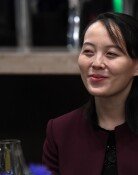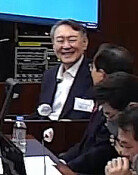The Second Act

I dropped out of college because I was poor. But it was the best decision Ive ever made.
So said the CEO of Apple Computer, Steve Jobs, during a congratulatory graduation speech at Stanford University. The former CEO of HP, Carly Fiorina, also dropped out of law school after a semester because she couldnt adapt.
This book, written by a lawyer and life consultant, is a life remodeling guide book that the author wrote after meeting numerous people ranging from the bankrupt to conglomerate leaders over the past 25 years. The writer insists that trial and error is the best way to realization, and that success is only a minuscule part of the learning process. The upside to many past failures is that you learn that much from them.
A second act is the life youve always dreamed of but never realized for some reason or other. When the second act starts, you need to become introspective on what you really want. The author says that in order to begin the second act and materialize dreams into reality, it is important for you to cut away branches to leave bare the most fundamental and most essential elements of your dreams.
There are five recommended things to practice to actualize your dreams making a dream list, finding your strengths and weaknesses, making a list of your interests, finding your innermost desires, and discovering your mission. It is best to meticulously write down the thoughts and changes you go through as you practice all five exercises.
Next there are the nine mindsets to achieve this second act, including never be afraid to ask for help and the more the choices, the better. The basic mindset fertilizes the soil for the tree of our dreams to grow tall and sturdy. These kinds of principles are practical because they were not learned through a philosophy book or a self-help lecture, but through more than 25 years of counseling people.
This book specifically reveals ways to overcome the 12 obstacles to achieving the second act such as age, money, time, looks, and so on. For instance, to get rid of the age barrier, you must banish all stereotypes of being too old or too young. Steve Jobs was just 21 years old when he started Apple, while Harland Sanders was 70 when he founded Kentucky Fried Chicken.
In the final pages of the book, there are ways for you to compose a second act scenario for yourself. The success stories of Apple CEO Steve Jobs, author of Harry Potter J.K. Rowling, and founder of KFC Harland Sanders are also interesting.
The father of business administration Peter Drucker once said that the golden years of his life began when he was 60 and lasted for 30 years. Picasso painted until he was 92, and Monet drew for more than 12 hours a day even after the age of 80. Now, we are looking to the age of centennial humans. We only live once. To start your second act and realize your dreams so that you can experience the peak of your life is exciting news indeed to everyone.







